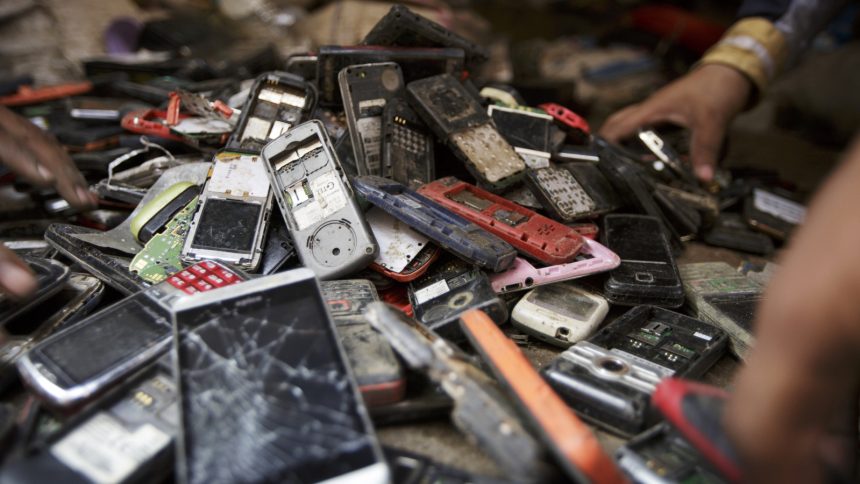To address the urgent need for metals in clean energy technologies, we must consider the vast potential of electronic waste. The latest United Nations report on global e-waste reveals that in 2022, a staggering 62 million metric tons of electronics were discarded. This includes valuable metals like copper, aluminum, neodymium, and more, critical for climate stabilization. Despite this, only a fraction of these metals are being recycled from e-waste. For instance, while 4 million metric tons of aluminum and 2 million metric tons of copper were present in e-waste, only 60% were recycled. The demand for these metals in the energy transition is rapidly increasing, with copper demand expected to triple by 2030 and aluminum demand to grow by 80% by 2050. However, the recycling rates for other crucial metals like neodymium and nickel are far lower. Neodymium, essential for wind turbines and electric vehicles, is present in e-waste but rarely recycled due to technological constraints. Meanwhile, nickel, crucial for electric vehicle batteries, is often recycled into steel products rather than recovered for specific applications. To tap into the valuable resource of metals in e-waste, better recycling policies and practices are needed. The European Union has set a goal for 25% of critical raw materials consumed to come from recycled sources by 2030, signaling a legislative push for metal recovery. Initiatives like the Department of Energy’s e-waste recycling prize aim to incentivize innovative solutions for increasing the production and use of critical materials from electronic scrap. By harnessing the metals present in e-waste, we can reduce reliance on virgin materials, combat climate change, and strengthen energy security.






